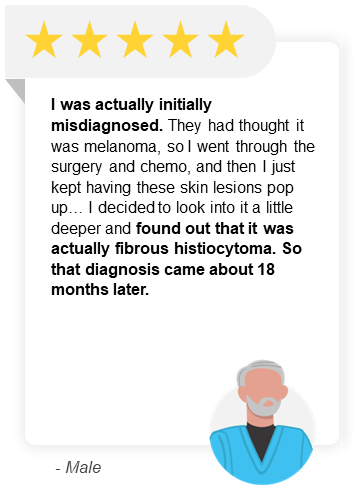Introduction
The National Coalition for Cancer Survivorship (NCCS) conducts an annual State of Survivorship Survey, in partnership with Edge Research, to delve into the cancer patient and survivor journey. This study captures a range of perspectives to better understand how NCCS can support its mission to advocate for quality cancer care for all.
Conducted in the spring and summer of 2022, the research helps NCCS build upon and track findings from previous years to better understand the differences in survivor attitudes, experiences, and needs. Through 15 in-depth interviews and a nationwide survey of 2,078 patients and survivors, 670 of whom have a connection to NCCS, this survey highlights the experiences and impact that cancer treatment and care have for survivors. Survey respondents in the national sample represent a wide range of stages of diagnosis, demographics, and socioeconomic levels, and NCCS used a sampling plan to ensure the survey was representative of cancer patients nationally by age, gender, race/ethnicity, and region (based on data from the American Cancer Society and National Cancer Institute). All data presented are from the national sample (n=1408) unless otherwise noted.
Overall, the data repeatedly show that significant disparities exist in the experience of cancer care, with a disproportionate effect among specific populations, including people of color, young adults, women, and individuals with metastatic cancer. Also, as we’ve seen in previous years, respondents who are connected to NCCS consistently had higher expectations and lower satisfaction in their assessments of quality care and were more likely to feel empowered to be active in their care. NCCS’s mission is to advocate for quality cancer care for all people touched by cancer. The data in this survey demonstrate an urgent and ongoing need to fulfill this mission.
Download Materials
Web Briefing
On October 26, NCCS hosted a web briefing to present the findings from the 2022 survey. Pam Loeb, Principal of Edge Research, and Shelley Fuld Nasso discussed the results in detail and took questions from an audience of survivors, health care professionals, researchers, and more.
Breifing Sections
00:00 Introduction
01:18 Methodology, Key Findings
05:53 Deep Dive Into the Cancer Journey
11:48 Journey: Screening/Diagnosis
17:49 Journey: Treatment & Care
30:27 Journey: Post-Treatment
33:39 The Costs of Cancer
36:47 Integrative Oncology
40:00 Q&A
The briefing recording can also be watched on YouTube.
Additional Questions Asked
Additional Questions Asked During the Briefing
Were any childhood or adolescent cancer survivors included in the survey?
Respondents had to be age 18 or above, though they could have been diagnosed as a child or adolescent.
How does NCCS define survivorship?
NCCS defines “survivorship” as beginning from the time of diagnosis and lasting for the balance of life, and has expanded its definition of survivor to include family, friends, and caregivers.
What, exactly, do you mean by coordination of care?
We did not define coordination of care. It was left to interpretation. We have found this year and last year that people give high marks for coordination of care, even as they described care that was not well-coordinated. The question was “How well do/did your health care providers coordinate your care with one another?” Respondents gave high marks, but then answered follow-up questions indicating that they have to share information between providers. That is not the only measure of coordination of care, but it is one indicator. There is not a consensus definition of care coordination.
Survey Report Sections
Deep Dive Into the Cancer Journey
Screening and Diagnosis
Treatment and Care
Post-Treatment Care
Costs of Cancer
Deep Dive Into the Cancer Journey
Screening and Diagnosis
Deep Dive Into the Cancer Journey
Over the years, majorities of patients continuously express a high degree of satisfaction with their cancer journey, then in qualitative discussions, there is a disconnect with the many problems they describe. To better understand this dynamic, we conducted an analysis that segmented patients into experiential categories: those who have had mostly positive experiences during their journey, mixed, and mostly negative.
The results show that part of this disconnect is demographic — people of color, younger, and lower socioeconomic status (SES) patients are more likely to be in the Mixed and Negative Experience segments. And part of it is experiential — these patients struggle more at each phase of their cancer journey.
Satisfaction with Cancer Journey: The Disconnect
There is often a disconnect between the ratings patients give and the journey they describe.
Cancer Journey: Screening and Diagnosis
Individuals in the three experience categories have significantly different satisfaction levels, beginning with screening and diagnosis.
While majorities of respondents typically have symptoms for up to three months and see an average of two doctors before they are diagnosed, the Negative Experience segment and many underserved groups went undiagnosed longer and saw more doctors. Notably, the respondents in the Negative Experience group saw an average of 3.6 doctors before receiving a diagnosis, Hispanic respondents saw an average of 3.5, and young adults (18-39) saw an average of 3.4. After twelve months, one-fifth of Hispanic patients and those in the Negative Experience group still awaited their diagnosis.
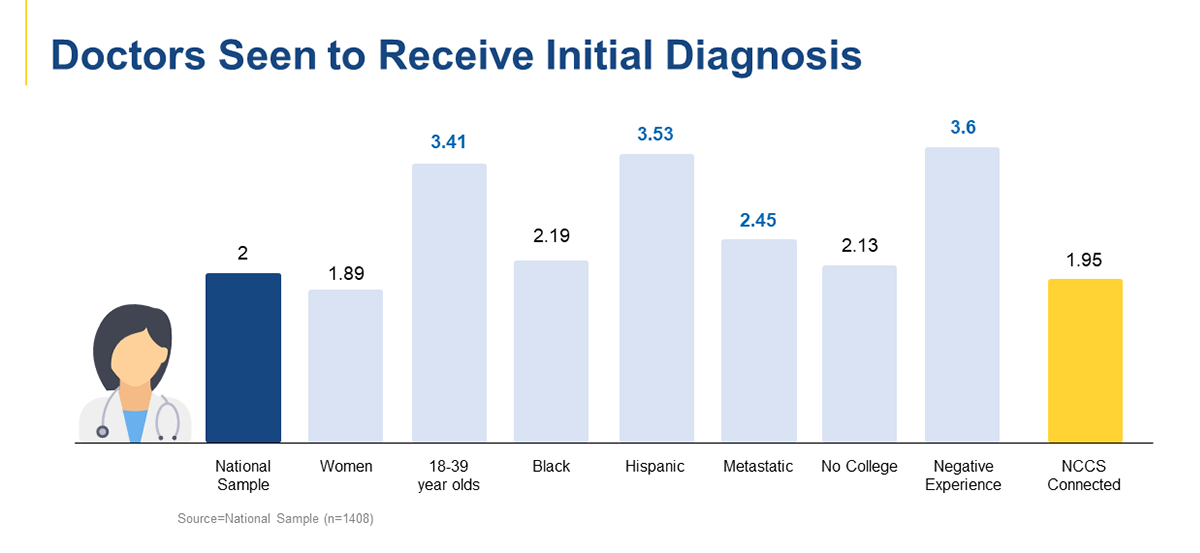
Unfortunately, more than 1 in 10 respondents reported receiving an initial misdiagnosis, with young adults 2.5 times as likely and the NCCS-connected group twice as likely to first be misdiagnosed.
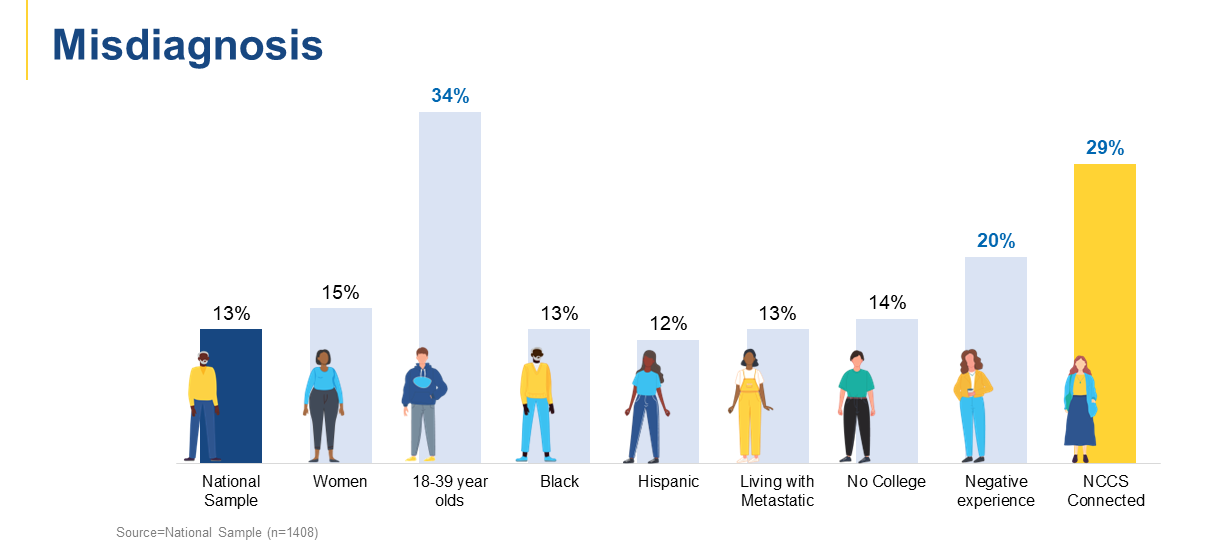
Cancer Journey: Treatment and Care
Nearly three-quarters of respondents reported they were very satisfied with their treatment and care, due to a high degree of trust in and the relationship with their health care team.
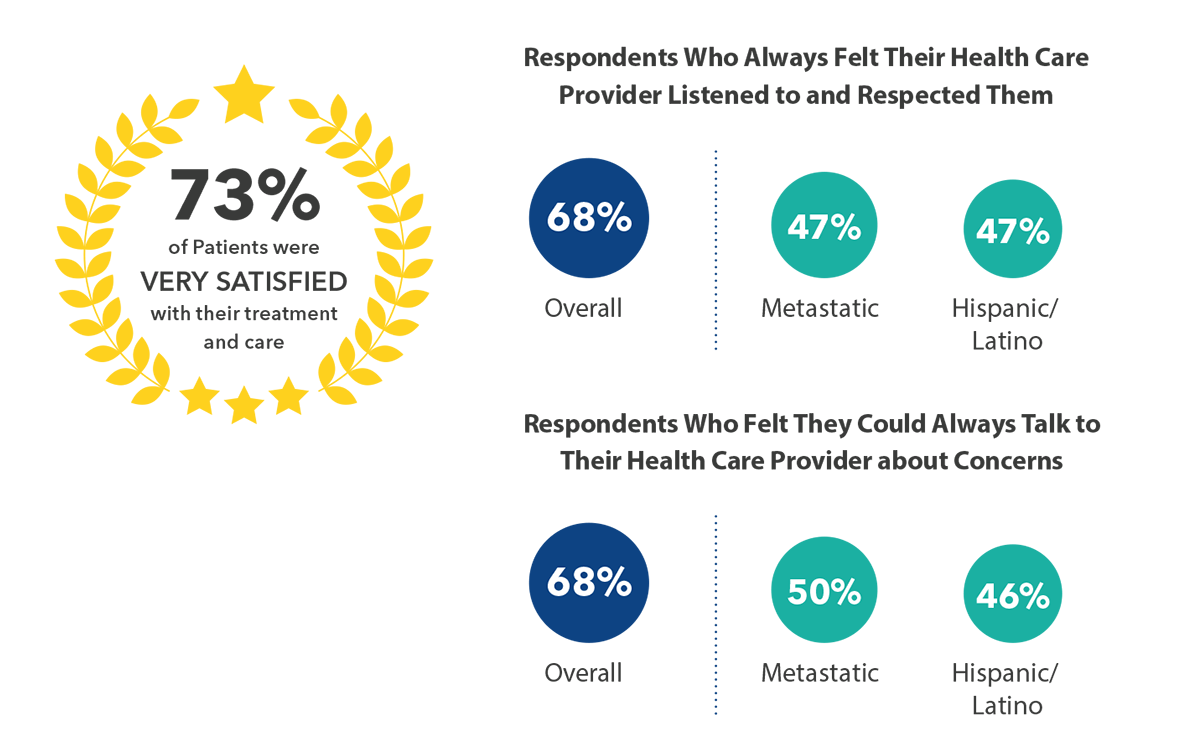
However, large disparities exist for those in the Negative Experience segment, including many underserved audiences. For example, 68% of respondents overall said they always felt their health care provider listened to and respected their concerns, while only 47% of Hispanic respondents and 47% of individuals with metastatic cancer agreed. Similarly, 68% overall said they could always talk to their health care provider about their concerns, while 46% of Hispanic respondents and 50% of individuals with metastatic cancer agreed. Further, levels of trust were high, but for a number of groups levels of trust were lower, including for young adults, people in treatment, Blacks, Hispanics, people living with metastatic cancer, and the NCCS connected group. The Negative Experience group gave providers lower satisfaction scores and used terms like “bullied,” “ignored,” “test subject,” and “rushed” to describe their care. While majorities of patients said their health care team was a critical support network during treatment, followed by family/friends and faith, the Negative Experience and Mixed Experience audiences were significantly less likely to report support in any areas of their life during treatment.
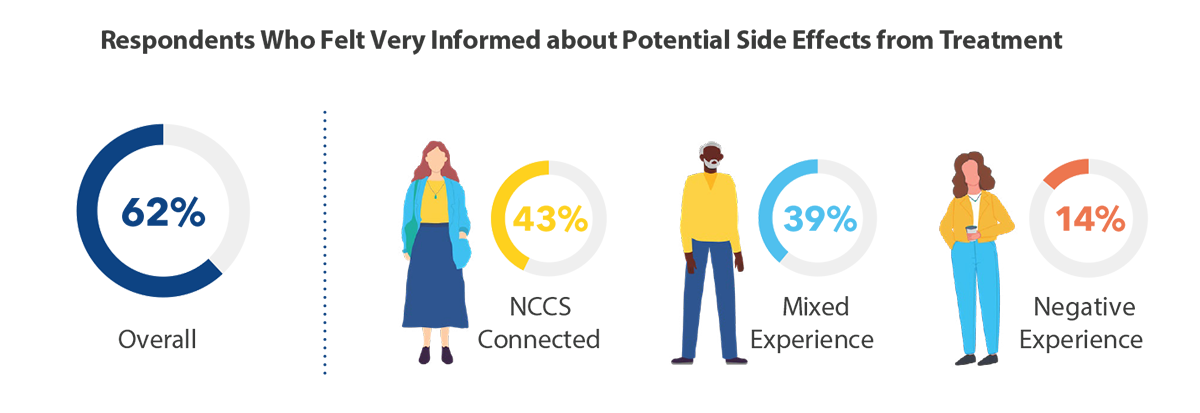
The survey also shows that participation in clinical trials remains low as demonstrated in previous survey results. Only 10% of respondents reported participating in a clinical trial related to their diagnosis, while only 11% of respondents said their health care team offered or discussed clinical trials with them.
When asked about symptoms, 86% of respondents reported experiencing at least one symptom during treatment. Notably, female, younger, and less educated patients were disproportionately affected by treatment symptoms. While 62% overall said they felt very informed about potential side effects from treatment, only 43% of the NCCS connected group, 39% of the Mixed Experience group, and 14% of the Negative
Experience group felt very informed. For many of the most common symptoms, less than half believe their health care team was very helpful in addressing them. Unfortunately, some survivors are still impacted by their symptoms even today. Nearly six in 10 of those diagnosed 10+ years ago said they still experience symptoms, with mental health and sexual concerns the most likely to be prolonged.
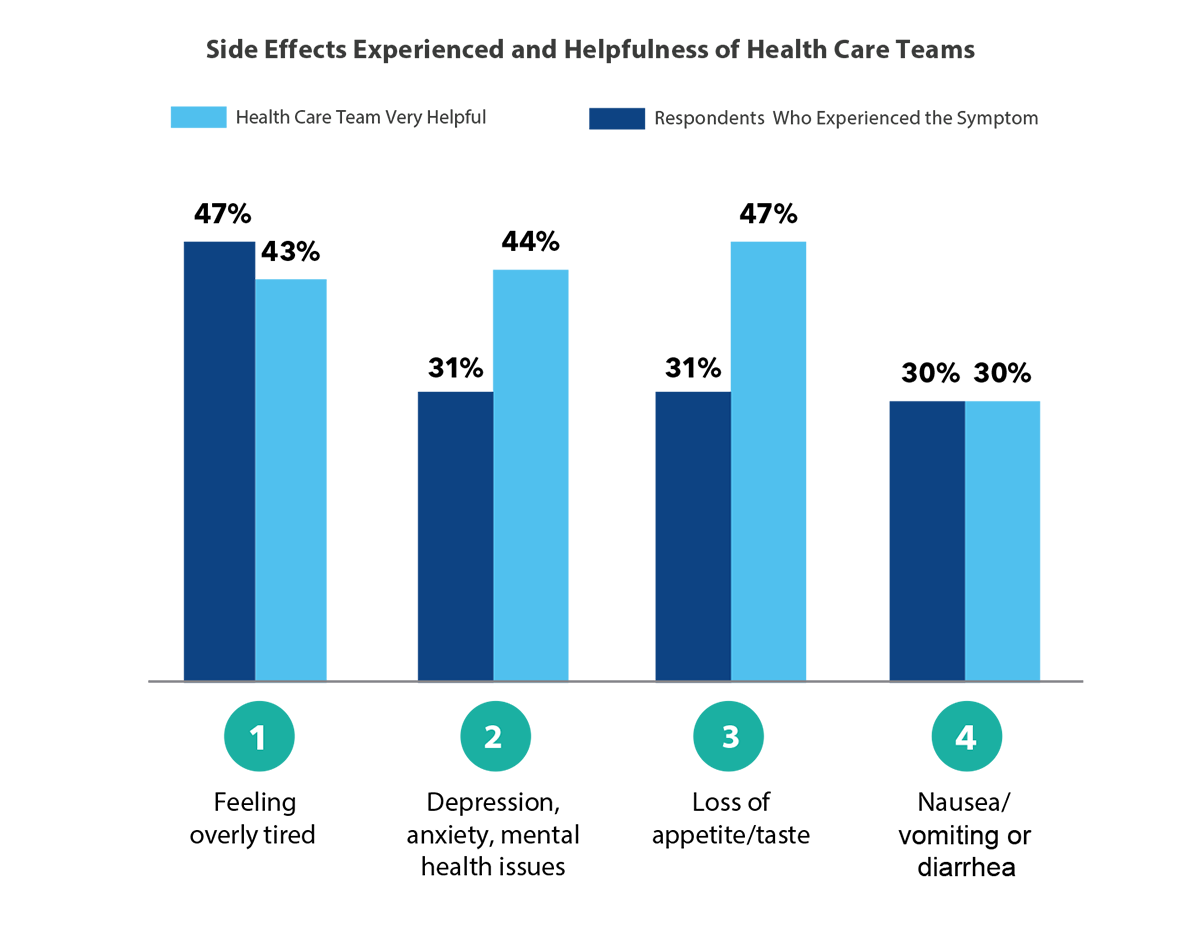
Cancer Journey: Post-Treatment Care
Survivors tend to have low expectations during the post-treatment stage.
When asked about their post-treatment care, approximately six in 10 respondents say they are satisfied — which is 10 points lower than satisfaction with in-treatment care — and less than half of respondents say their health care provider did a good job transitioning them to this stage. During this stage, 63% of survivors reported that they discuss follow-up tests to monitor their cancer with their health care provider, but far fewer discuss other critical issues like quality of life (34%), exercise and nutrition (34%), physical function (29%), the mental and emotional impact of their illness (26%), and fatigue (18%) and pain (16%) that interfere with daily life.
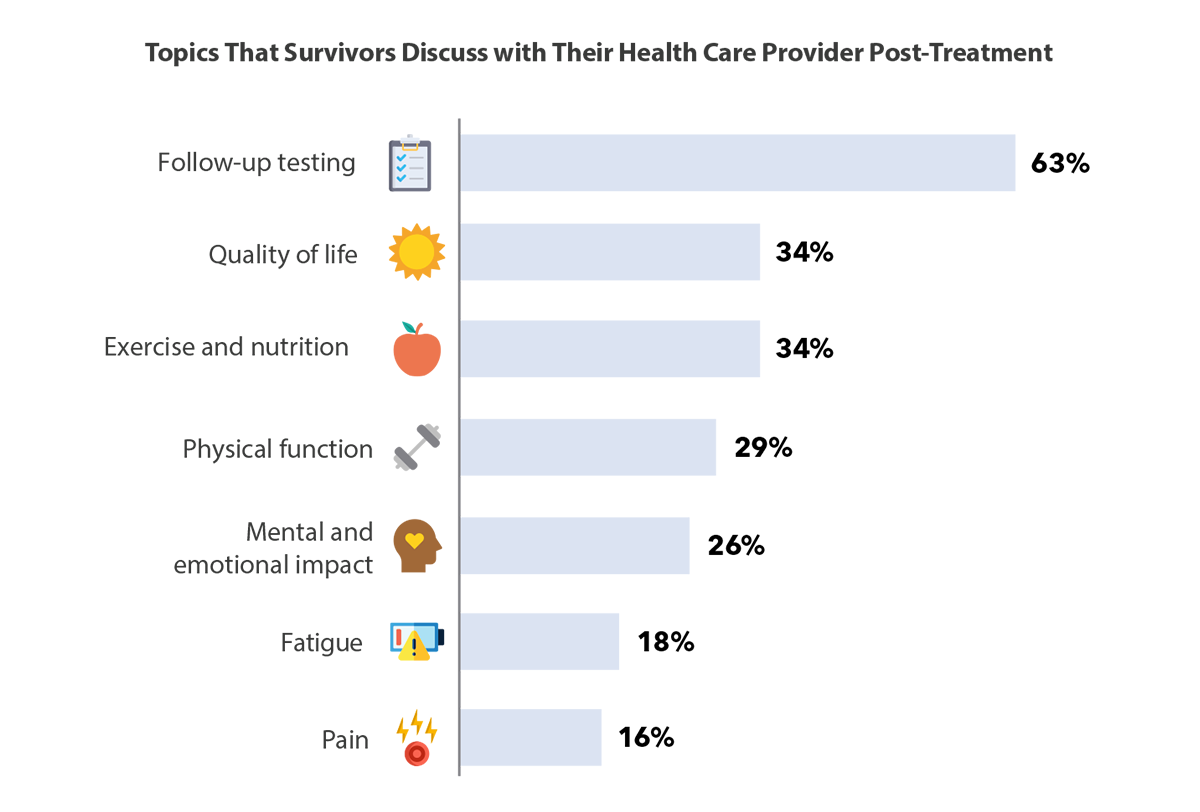
Those with the most negative experiences during their cancer journey indicate they still need help. The Negative Experience segment would like their health care team to be more proactive in discussing post-treatment issues, especially mental health, exercise, nutrition, and the fatigue and pain they still experience. The Negative Experience group is also twice as likely to say that they do not discuss any of the typical topics (27%) compared to the national sample total (14%). Overall, it is clear that there is a definite need for greater communication between survivors and health care providers at this stage.
Costs of Care
In past surveys, the same physical, emotional, and financial issues have emerged as top concerns.
Overall, the top physical, financial, and mental health concerns this year include maintaining a healthy weight (61%), uncertainty about the future (60%), getting enough exercise (55%), the cost of medical care (55%), and being there for family and friends (55%). Among people living with metastatic cancer, emotionally preparing for end-of-life (62%), preparing to make/making end-of-life decisions (58%), and planning for end-of-life care (56%) were also top concerns. In all of these areas, the Negative Experience and Mixed Experience groups, as well as underserved populations, were more likely to say they experience these concerns. While the same issues consistently rise to the top, more respondents are concerned about almost all of these issues in 2022, particularly financial concerns. Concerns that increased most significantly since last year’s survey include the cost of non-medical expenses like food, housing, and transportation (+14 percentage points), the cost of prescriptions (+11), the cost of caregiving (+11), the cost of medical care (+9), and understanding insurance (+9).
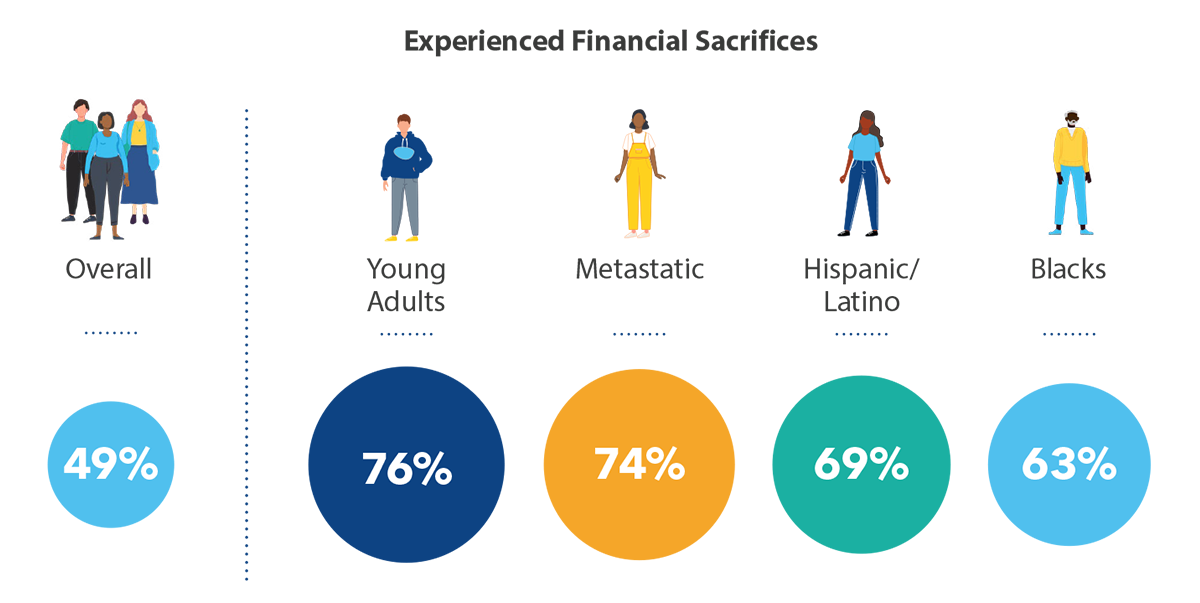
Nearly half of respondents reported experiencing financial hardships and making employment and/or educational sacrifices because of their cancer care. This number is significantly higher among young adults, Blacks, Hispanics, and people living with metastatic cancer, as well as the Mixed Experience and Negative Experience groups that they are more likely to be a part of. For instance, 76% of young adults, 74% of people living with metastatic cancer, 69% of Hispanics, and 63% of Blacks said they were impacted financially. Further, 79% of Hispanics, 78% of young adults, and 77% of people living with metastatic cancer said they had to make employment and/or education sacrifices.
Cancer care also costs patients in terms of their time. Nearly one in four respondents have had to travel more than an hour from their home at least once to visit a health care provider to receive care. Approximately one-third of young adults, Blacks, Hispanics, individuals in the Negative Experience group, and patients in rural settings have had to travel to receive care. Notably, one-quarter of rural patients reported they had to travel over an hour away more than five times to receive care. Additionally, Hispanic patients who traveled for care had to travel an average of nearly three hours, while young adults and people living with metastatic cancer traveled an average of 2.5 hours from home.
Request Survey Data
The National Coalition for Cancer Survivorship (NCCS) accepts requests from researchers and advocacy organizations wanting to use the State of Survivorship data set to support their research and practice for the purpose of improving quality of care for those touched by cancer.
Program Supporters



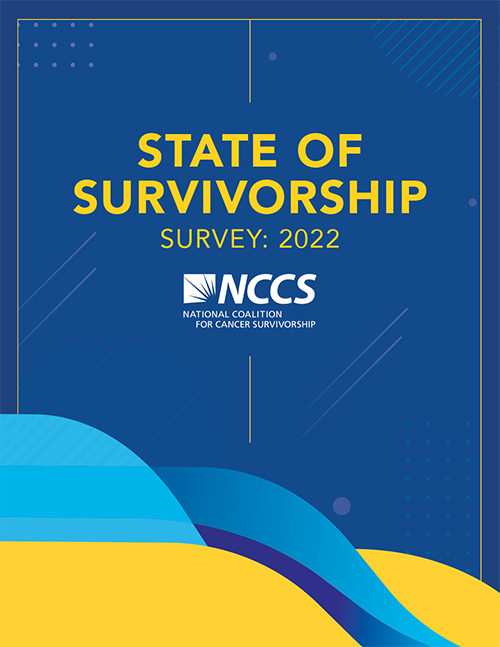
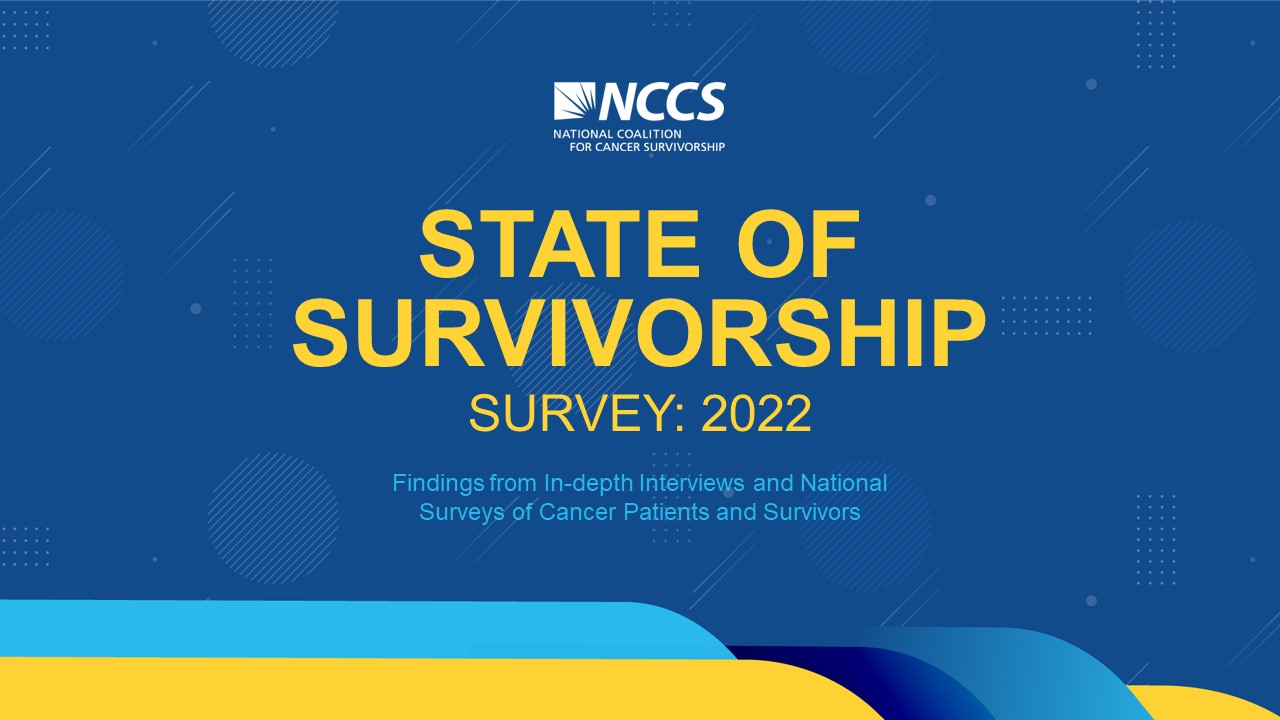
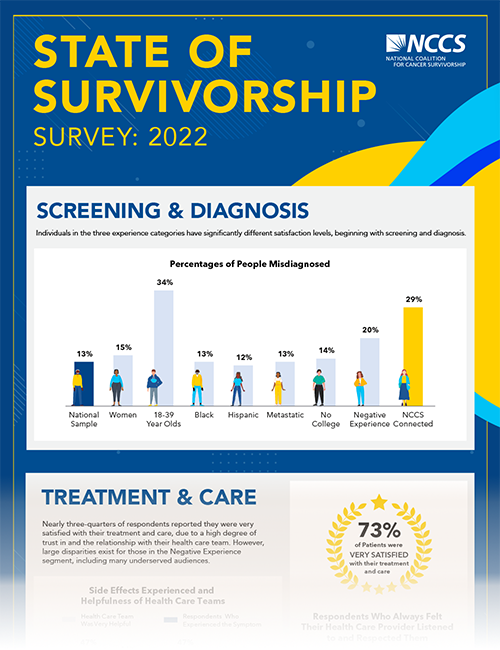
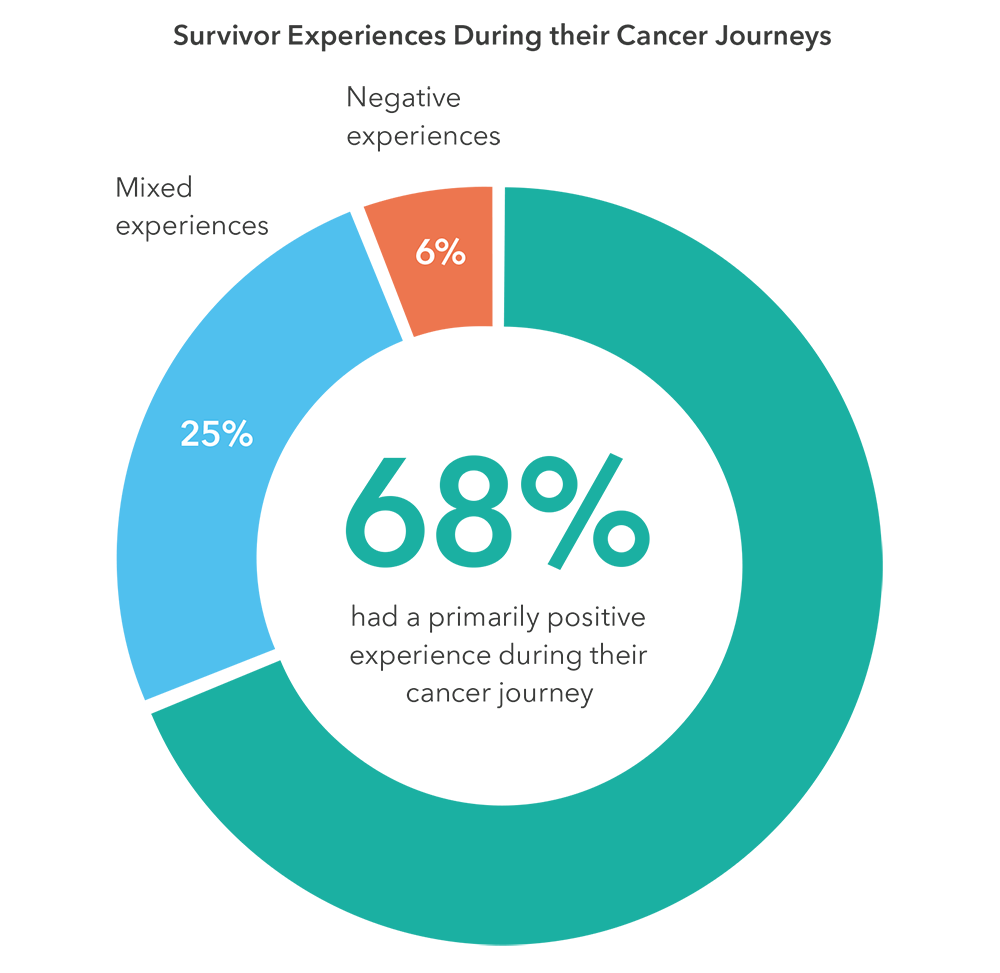
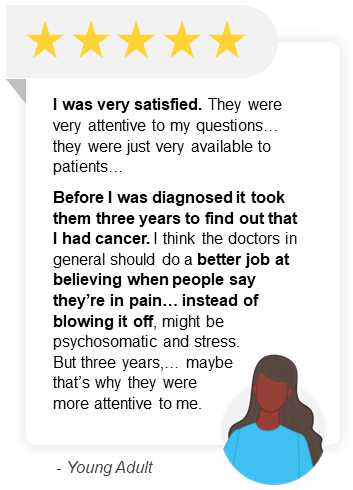
![Deep Dive interview 2 "My lower back was hurting really bad, and… everyone kept telling me there was nothing wrong… [I went] to the emergency room and they said, “We’re going to give you a CT scan just to prove nothing wrong with you,” because I had been going for three or four months. They did a CT scan and said, “We’re going to… have you taken to MD Anderson,” which is the cancer place in Houston. [Satisfaction] is pretty much a 5… I’m here, so I’m good." --Male](https://canceradvocacy.org/wp-content/uploads/Deep-Dive-interview-2.png)
